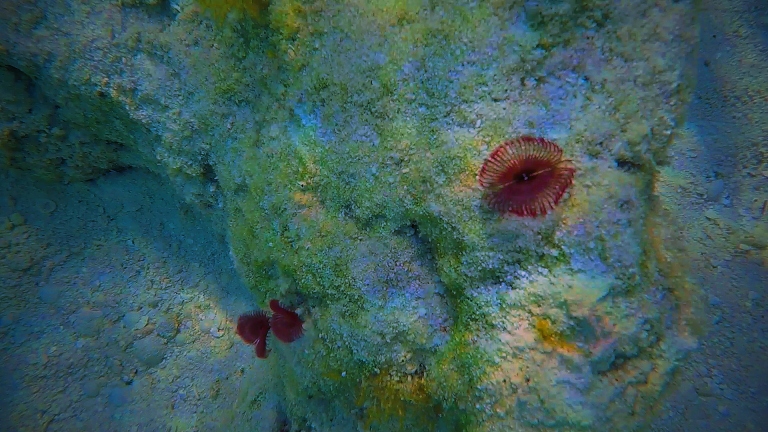Annelids
The Phylum Annelida is defined by its morphology as segmented worms. They express closed circulatory systems in the same fundamental manner that Homo sapiens (humans) do. Annelids are categorized taxonomically into many classes. A few of these classes are: Class Polychaeta, Class Clitellate and Class Echiuran. Common organisms in the Class Clitellate include Oligochaeta (earthworms) and Branchiobdellida ad Hirudinea (leeches). Ecologically, Annelids are subdivided into two classifications. Errent polychaetes express a multitude of parapodia appendages, defined heads complete with proboscis and are able to extend their bodies in order to have a greater physical surface area for gas exchange. The latter group being Sessile Tube Dwelling Annelids. These organisms contain the segmented part of their bodies within an external tube. The portion of their being that is extended is a feeding appendage that filters through the water. A great example of a Sessile Tube Dwelling Annelid is the Christmas-tree worm. Each Christmas-tree worm has two feeding appendages to filter through the water. They also have the ability to retract quickly when the worm feels threatened. Some are even photosensitive, which means when natural light is obscured by a potential predator, they automatically retreat. Sessile annelids are also inclusive of medusa worms and deep-sea thermal vents.

Split-crown feather dusters also live in reefs like the Christmas-tree worm. They have two semi-circle crowns of radioles which form a crown with a split down the center. These worm don’t just live on the reef, they live in tubes that the worm builds from particles of sand and a “glue” that is excreted from the worms body. The crown of radioles act as gills and that capture plankton and other microscopic organisms that the worm can feed from. When threatened, feather dusters will quickly retreat back into their tubes.

In the Turks and Caicos as well as other locations where they are found, there is an incredible phenomenon that takes place with the Odontosyllis enopla, otherwise known as the Bermuda Fireworm. This is a small, polychaete worm found in the western Atlantic Ocean. Since they are polychaetes, their bodies consist of multiple segments, each with a pair of parapodia. Their heads have two pairs of eyes at the sides each with lenses. Each pair of eyes is orientated in a different plane. Females can grow up to 20mm while males grow up to about 12mm. Their nickname comes from the fact that they are bioluminescent when they rise to the surface during the mating period. The Bermuda Fireworm typically lives in protected rocky bottoms and they swim to the surface 2 to 3 days after each full moon to spawn. These worms are only bioluminescent during mating times. They also follow a lunar periodicity pattern, which is why the swim to the surface to mate around the time of a full moon. Lunar periodicity is typically seen in response to changes in light intensity from the sun to light intensity from the stars. Typically, the female worm appears first, swimming up from the rocky bottom to make circles at the surface. The females then give off a green glow, looking like “marine fireflies”. The glowing, though amusing for human spectators, is designed to attract the attention of males at the bottom. If you look closely, you can see the males rush up to the surface to meet the females. When the males fly up to the surface, they immediately fertilized the released eggs.

The information of this chapter in thanks to content contributions from Melissa Wydra and Jason Charbonneau
